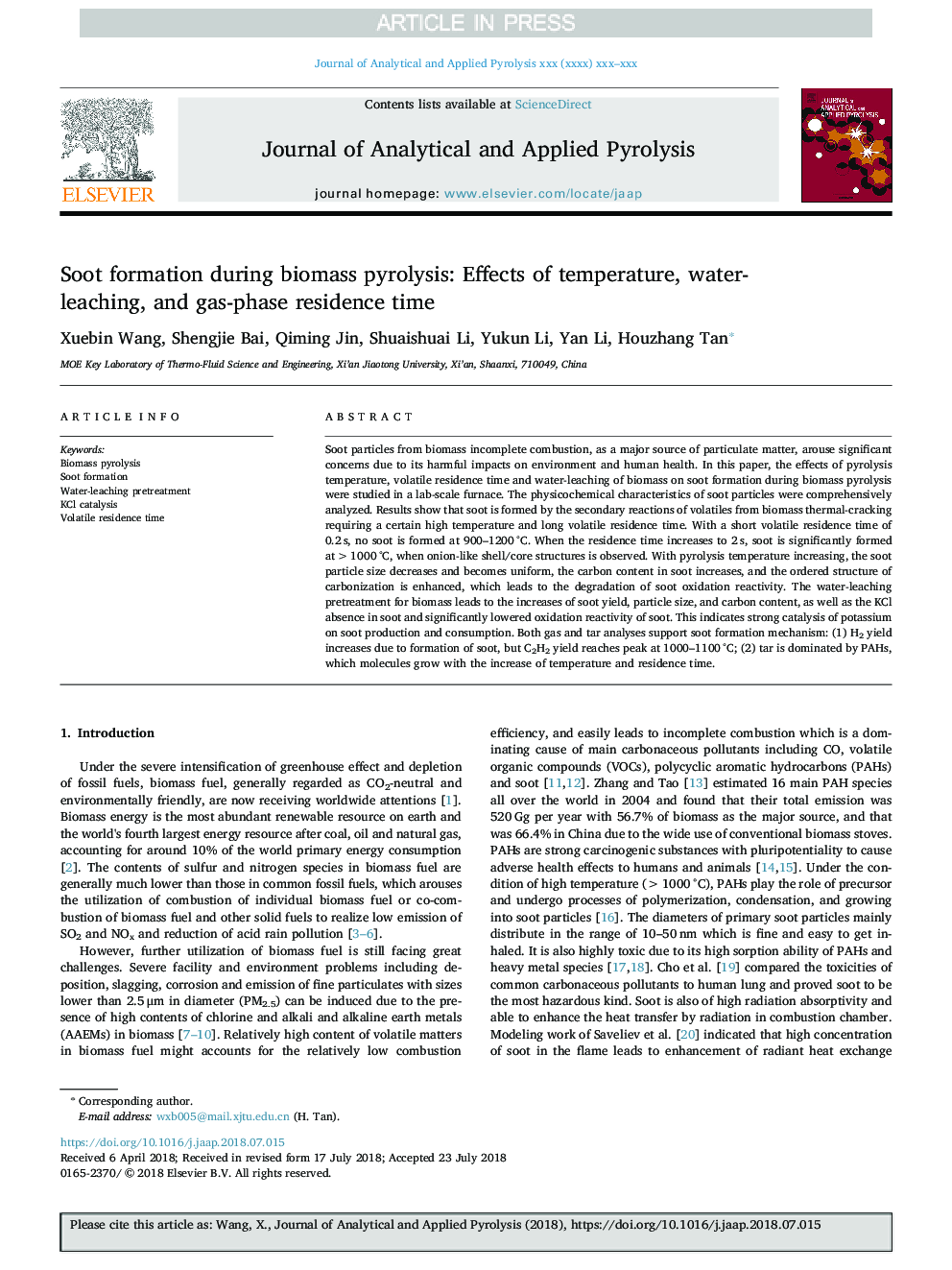| Article ID | Journal | Published Year | Pages | File Type |
|---|---|---|---|---|
| 8954871 | Journal of Analytical and Applied Pyrolysis | 2018 | 11 Pages |
Abstract
Soot particles from biomass incomplete combustion, as a major source of particulate matter, arouse significant concerns due to its harmful impacts on environment and human health. In this paper, the effects of pyrolysis temperature, volatile residence time and water-leaching of biomass on soot formation during biomass pyrolysis were studied in a lab-scale furnace. The physicochemical characteristics of soot particles were comprehensively analyzed. Results show that soot is formed by the secondary reactions of volatiles from biomass thermal-cracking requiring a certain high temperature and long volatile residence time. With a short volatile residence time of 0.2âs, no soot is formed at 900-1200â°C. When the residence time increases to 2âs, soot is significantly formed at >1000â°C, when onion-like shell/core structures is observed. With pyrolysis temperature increasing, the soot particle size decreases and becomes uniform, the carbon content in soot increases, and the ordered structure of carbonization is enhanced, which leads to the degradation of soot oxidation reactivity. The water-leaching pretreatment for biomass leads to the increases of soot yield, particle size, and carbon content, as well as the KCl absence in soot and significantly lowered oxidation reactivity of soot. This indicates strong catalysis of potassium on soot production and consumption. Both gas and tar analyses support soot formation mechanism: (1) H2 yield increases due to formation of soot, but C2H2 yield reaches peak at 1000-1100â°C; (2) tar is dominated by PAHs, which molecules grow with the increase of temperature and residence time.
Keywords
Related Topics
Physical Sciences and Engineering
Chemistry
Analytical Chemistry
Authors
Xuebin Wang, Shengjie Bai, Qiming Jin, Shuaishuai Li, Yukun Li, Yan Li, Houzhang Tan,
